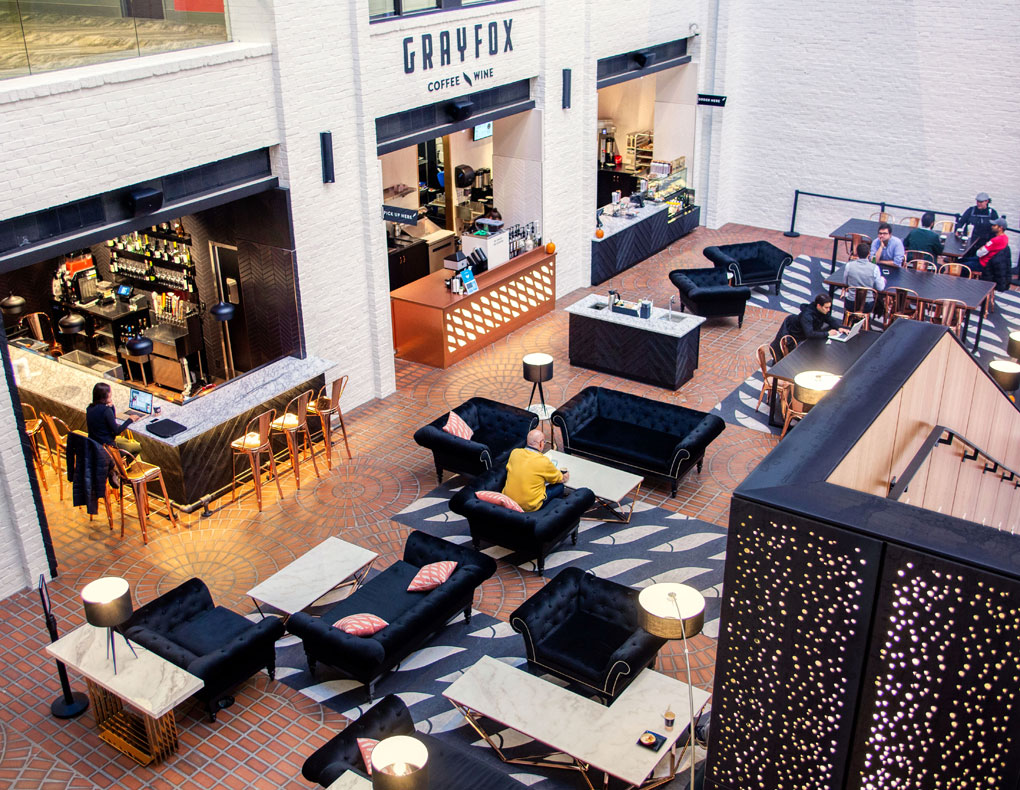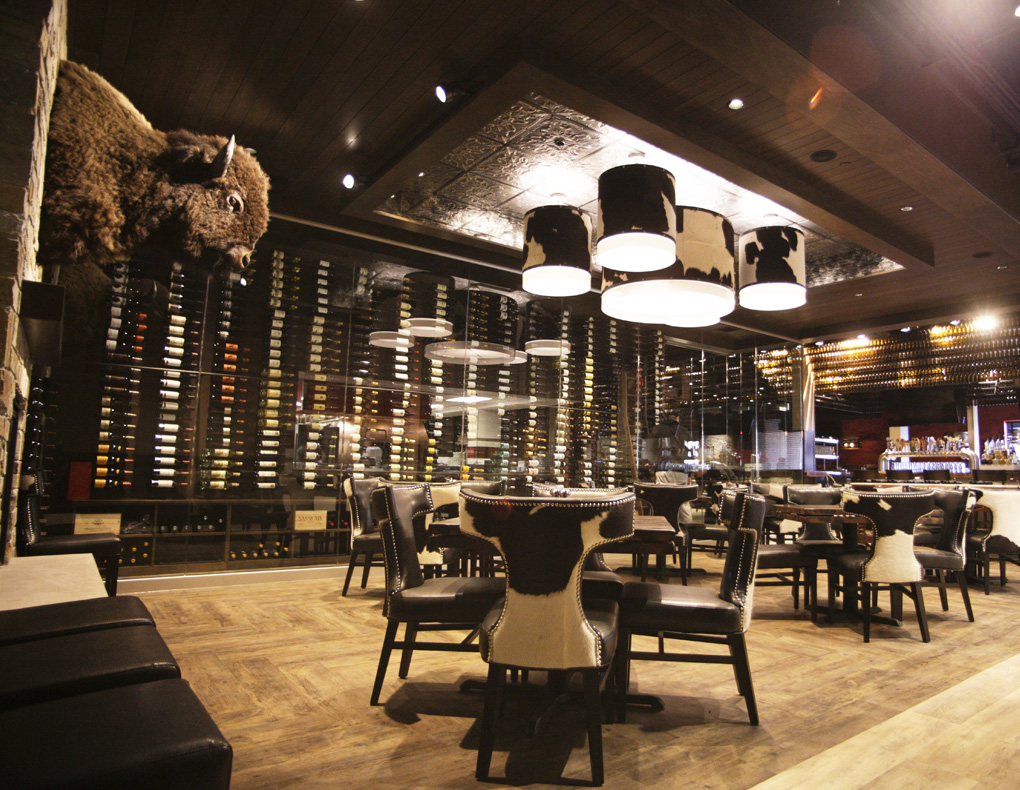A strategic commercial property renovation can flip an under-performing address into a genuine profit engine. We have spent two decades in the Twin Cities guiding restaurant owners, retailers, and mixed-use landlords through makeovers that do far more than freshen paint: they lift asset value, trim operating costs, and reinforce the brand stories guests remember.
The ten principles below blend architectural fundamentals with financial discipline so every construction dollar works hard and every design decision passes the ROI test.

1 Plan for Success: Build a Strong Foundation
No renovation begins with demolition; it begins with diagnostics. We recommend to start by mapping the existing building—structural bays, mechanical chases, utility feeds, lease lines—then layer on strategic goals that are both measurable and time-bound. A downtown café might aim to double seats and slice kitchen ticket time by five minutes; a suburban health-and-wellness hub may target 20 percent energy savings and zero ADA deficiencies.
Once targets are pinned, we recommend to break the scope into phases that mirror operational priorities. Long-lead items—new electrical service, custom millwork, specialized equipment—are ordered first, while “soft” zones such as entry graphics wait until budgets firm up. Every cost line includes a 15 to 20 percent contingency to absorb concealed-condition surprises.
2 Safety First: Invest in Protection and Peace of Mind
Building code compliance gives you legal protection, but thoughtful safety features offer much more – they can become a competitive advantage for your commercial property. Minnesota’s challenging climate, with its dramatic freeze-thaw cycles, puts extra stress on building systems.
Consider upgrading beyond minimum requirements with features like heated exterior stoops that prevent ice buildup, redundant sprinkler sensors for better fire protection, or emergency power supplies that can keep walk-ins and point-of-sale systems running during outages. Inside, fire-rated assemblies around kitchen exhaust hoods and advanced duct detectors could provide early warnings of potential issues like ice blockage or fan failures.
Restaurant tenants often notice and value these safety investments. Those who have experienced forced closures due to weather events or system failures elsewhere may willingly pay premium rates for more resilient spaces. Properties with snow-free ADA-accessible entries, modern security systems with remote monitoring capabilities, and emergency lighting that functions during power outages demonstrate foresight and care.
These thoughtful safety upgrades do more than reduce liability risks – they can justify higher lease rates and potentially lower insurance premiums, making them a surprisingly effective way to improve your property’s long-term value and net operating income.
3 Make It Beautiful: Attract with Intention
Thoughtful design isn’t just about aesthetics—it’s a powerful revenue strategy. Consider that first impressions form in just three seconds, about the time someone takes to glance at your restaurant’s façade. That’s why treating your storefront as a visual invitation can be so effective. Clean lines with slim steel frames, generous clear glass, and a cohesive color palette can signal quality and transparency, drawing interest before potential customers even see your menu board.
Once guests step inside, lighting can transform their experience. Consider a layered approach: distinctive pendant fixtures that express your brand personality, complemented by subtle LED lighting that highlights textures and creates a welcoming atmosphere rather than a stark, over-lit space. This lighting strategy helps guests feel comfortable and encourages them to stay longer.
The right seating choices can directly impact your business model. You might select comfortable lounge chairs in areas where you want customers to linger with laptops and coffee, efficient upright seating in high-turnover lunch sections, or spacious booths that encourage evening diners to relax and order more courses.
Beautiful, intentional design isn’t an unnecessary expense—it’s an investment that transforms curious first-time visitors into regular customers who stay longer and spend more.
4 Space Efficiency: Earn More per Square Foot
Rent never forgives wasted corners, so every inch must work at least two shifts. We recommend to start by diagramming traffic loops—diners, staff, deliveries, maintenance—and shaving overlap until each path is unbroken and short. Moveable partitions, nesting tables, and wall-hung banquettes let rooms flip from breakfast rush to private cocktail class in minutes.
For example, a compact Uptown brasserie could adopt rolling service carts and hinged table leaves, potentially growing lunch-only revenue by 30 percent as the dining room converts into a ticketed jazz club after 9 p.m. Smart design could also maximize hidden spaces – raising a main supply duct by just one foot might create room for a mezzanine storage loft that would free the floor of bus carts, making space for two additional two-tops. The added annual revenue from these extra tables could cover the cost of HVAC rerouting in less than a year. These space efficiency strategies represent small geometric adjustments that can deliver ongoing financial benefits.
5 Sustainable Solutions: Save Now and Later
Energy equals operating margin. LED relamping, heat-recovery ventilators, low-flow fixtures, and demand-controlled kitchen make-up air trim utilities month after month while pleasing ESG-minded tenants. You can reduce a significant amount of energy spend by pairing a smart thermostat with new continuous insulation.

6 Maintenance Planning: Protect Your Investment
Even the most impressive restaurant renovation can quickly lose its shine without proper ongoing care. Consider implementing a structured maintenance plan that outlines clear responsibilities: daily sanitizing routines, weekly filter cleaning, monthly grease trap maintenance, and annual safety testing for hood systems. Digital solutions like QR-coded maintenance logs with automated reminders can help managers stay on schedule, while photo documentation ensures accountability.
This proactive approach helps preserve equipment warranties, maintains healthy indoor air quality, and prevents those dreaded middle-of-the-night emergencies—like a frozen cooling coil that could shut down operations during your busiest weekend. Restaurants with well-organized maintenance schedules are less likely to miss critical service intervals.
The benefits extend beyond just preventing breakdowns. Customers notice the consistent cleanliness and smooth operation, often reflecting this in positive online reviews. Remember that maintenance shouldn’t be viewed as just another expense—it’s actually the most cost-effective way to ensure your restaurant stays fully operational and continues to deliver the experience your customers expect.
7 Interior Design: Tailor for Your Audience
Restaurant interiors have the power to shape both emotions and movement patterns. Consider incorporating natural elements—perhaps living moss walls, herb planters, or warm cedar accents—near entrance areas to help guests transition and relax as soon as they step inside. Thoughtful acoustic treatments like ceiling clouds, perforated wood screens, and strategic sound absorption can maintain comfortable noise levels (under 65 decibels) even during busy weekend service.
Effective seating arrangements often reflect different customer needs and dining occasions. You might position casual two-tops along bright window areas for walk-in guests, install high-back banquettes against walls for couples seeking privacy, and place a communal table in the center to create energy and social interaction.
Visual focal points—like a custom neon sign with your signature phrase or a distinctive display wall featuring vintage ingredients that connect to your concept—can become social media highlights that inspire guests to share their experience online, extending your marketing reach organically.
8 Code Compliance: Avoid Costly Setbacks
Building codes, permit requirements, egress regulations, accessibility standards, and mechanical/electrical/plumbing capacities can derail your restaurant project if discovered too late in the process. Consider arranging an early consultation with local inspectors to identify potential issues while your plans are still easily modified—much better than finding problems after construction has begun. This proactive approach could save thousands in change orders and prevent schedule delays.
For renovation projects, detailed assessment of existing conditions is invaluable. Technologies like laser scanning can identify hidden elements such as fire dampers or old utility lines before they become expensive surprises. Making adjustments in the planning phase is always more cost-effective than modifying completed construction.
Today’s diners increasingly expect enhanced health and safety features. Touchless fixtures, proper ventilation systems with appropriate air exchange rates, and upgraded filtration not only meet current expectations but might also qualify your project for incentive programs or grants. Staying ahead of code requirements isn’t just about avoiding penalties—it’s a strategic approach to risk management that can provide unexpected benefits for your business.
9 Hire the Right Team: Professionals Who Get It
Successful restaurant projects depend on collaborators who can balance creative design with financial realities. When selecting your team, look for architects and designers who not only develop exciting concepts but also coordinate effectively with engineers, evaluate contractor proposals, and provide transparent budget tracking throughout the process. This approach helps you see exactly where your investment is going and allows for adjustments while changes are still feasible—rather than facing costly surprises later.
Experience within your local market matters significantly. Professionals familiar with the Twin Cities understand regional factors that affect timelines—from material availability issues like birch veneer shortages to seasonal considerations such as winter concrete curing requirements. This knowledge allows them to develop realistic schedules and procurement strategies.
The right professional team should also understand the financial side of your project, preparing the necessary documentation for lenders including draw schedules, sworn construction statements, and progress reports. This expertise keeps funding flowing smoothly throughout construction and helps prevent delays.
While it might be tempting to save money by working with less experienced professionals, this approach often costs more in the long run through inefficiencies, errors, and missed opportunities. Investing in established expertise typically accelerates your return on investment by avoiding the costly learning curve that comes with inexperience.

10 Market the Transformation: Tell the Story
A common mistake many restaurant owners make is waiting until opening day to start their marketing efforts, then wondering why crowds don’t immediately appear. Instead, consider beginning your storytelling the moment your project starts. Share updates when demolition begins, post compelling before-and-after progress photos, create time-lapse videos of interesting construction processes like terrazzo floor installation, or offer behind-the-scenes glimpses of menu testing in your temporary kitchen. This ongoing narrative helps potential customers develop an emotional connection to your restaurant well before you serve your first meal.
Remember that your grand opening is just the beginning of your story, not the conclusion. Keep the momentum going with regular updates highlighting your restaurant’s evolution—energy efficiency improvements, collaborations with local suppliers, seasonal menu changes, or community partnerships. These continuous touchpoints maintain interest and bring customers back to experience what’s new.
The commercial property renovation itself provides the initial excitement and attention-grabbing headlines, but consistent, engaging storytelling is what sustains customer traffic, builds loyalty, and supports premium pricing over the long term. Think of your marketing as an ongoing conversation with your community rather than a one-time announcement.
Ready to unlock your property’s potential?
Our studio offers complimentary consultations for owners determined to transform outdated footprints into high-performing assets. With twenty years of Twin Cities experience—spanning restaurants, retail, and mixed-use—we marry design vision with financial discipline. Tap utility rebates, streamline construction phasing, and build a space that pays dividends for years. Contact us.

Recent Comments